There are 28 snakes you may come across in Colorado. Maybe you are curious about snakes or you are scared of them, it’s important to note that snakes play an important role in nature.
Snakes can be found throughout Colorado, ranging in size, habitat, and color.
Knowing the different snakes can help you identify the snake you have seen while helping you identify those you must stay away from.
Table of Contents
Are There Venomous Snakes in Colorado?
Out of the 28 snakes you may encounter in Colorado, only 3 are venomous. The venomous snakes include:
Massasauga
The venom from the Massasuga snake destroys tissues while containing an enzyme that is able to disrupt your blood flow and stop your body from clotting blood.
While they do avoid humans wherever possible, a bite from one of these snakes is considered a medical emergency.
Midget Faded Rattlesnake
This rattlesnake has a toxic venom, worse than the other rattlesnakes. Their venom is considered highly toxic being a potent mytotoxin, concolor toxin, and neurotoxin.
Immediate medical treatment is necessary if bitten by the midget faded rattlesnake.
Prairie Rattlesnake
A bite from the prairie rattlesnake is considered very dangerous to humans and can be lethal.
Seek immediate medical treatment if you think you have been bitten by this snake in Colorado.
Snakes In Colorado
The 28 snakes you may encounter in Colorado includes:
1. Blackneck Garter Snake

Scientific name: Thamnophis cyrtopsis.
Common name: blackneck garter snake.
Length: around 71 cm
Venomous: No.
Blackneck garter snakes grow to around 71cm in length and are brown to olive-gray with a blue to gray colored head.
Their underside is white or brown to green.
There is a mid-dorsal stripe that can be white or yellow with orange shading. There are two black patches on either side of the stripe at the head. There is also a lateral stripe of tan, yellow, or cream.
Younger snakes are brighter in color.
These are semi-aquatic snakes and are usually encountered near ponds and streams, along with rocky pools.
2. Texas Blind Snake

Scientific name: Leptotyphlops dulcis (or Rena dulcis).
Common name: Texas blind snake, Texas slender blind snake, Texas threadsnake.
Length: around 11 in (27 cm)
Venomous: No.
These are small and slender snakes growing to 27 cm in length with smooth scales.
They vary in color from gray to pink to red/brown.
They prefer desert fringes and grasslands with plenty of rocks and logs, where they can hide. They have been found in suburban areas, though they are most commonly encountered in grasslands and rocky hillsides.
3. Bullsnake
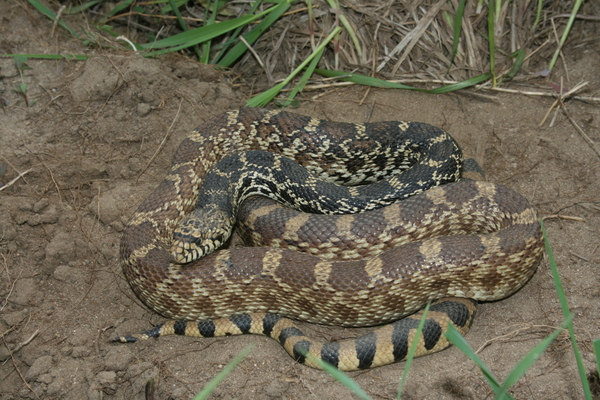
Scientific name: Pituophis catenifer sayi.
Common name: Bullsnake.
Length: 4 – 6 ft (1.2 – 1.8 m)
Venomous: No.
Bull snakes are large snakes that can grow to 6 feet (1.8 meters) in length.
They are yellow with patches of white, black, red, or brown with large patches on top and three sets of spots on their sides. They have banding on their tails.
Anything bigger than them is seen as a threat, where the snake will remain quiet and still. They will then try and flee as quickly as possible. If you threaten the snake, it will rear up to make itself look larger, while hissing and lunging.
4. Western Milksnake
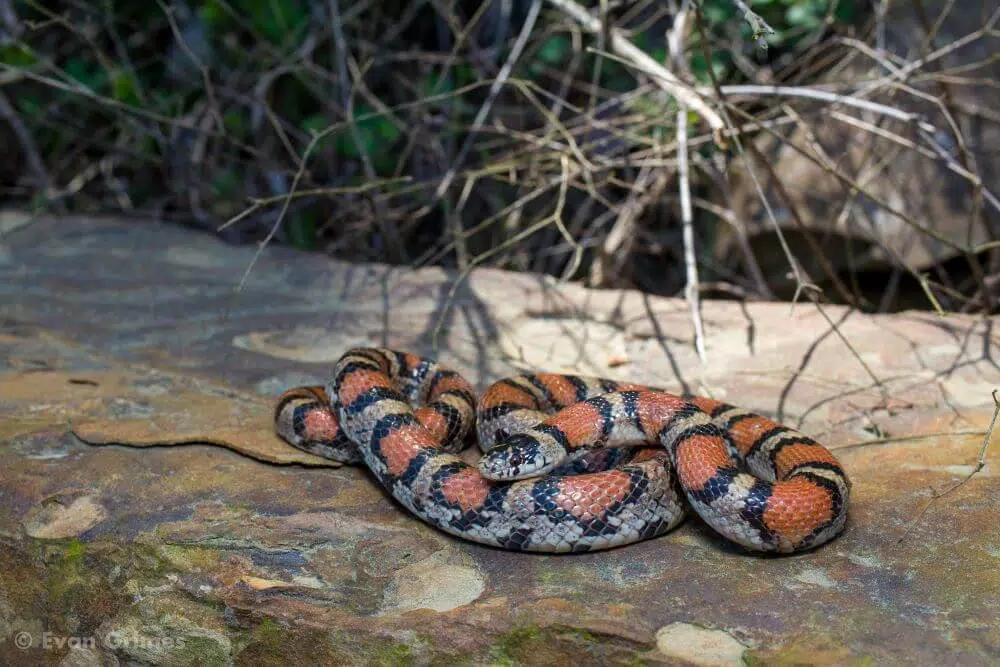
Scientific name: Lampropeltis gentilis.
Common name: Western milksnake.
Length: 24 in (60 cm).
Venomous: No.
Western milksnakes can grow up to 24 inches (60cm) in length with shiny and smooth scales.
They have alternating bands of black, yellow, and red or black, red, and white. They look similar to coral snakes with juveniles often being killed because of their resemblance to copperheads.
They prefer forested areas, though they can be found on rocky slopes and in open prairies.
They are nocturnal and terrestrial and are able to blend in with their surroundings, helping them remain hidden and secretive.
When threatened, the snake’s first line of defense is to escape. If you corner a western milksnake, it will vibrate its tail and strike, though it is not venomous and is harmless to humans.
Further Reading:
5. Coachwhip
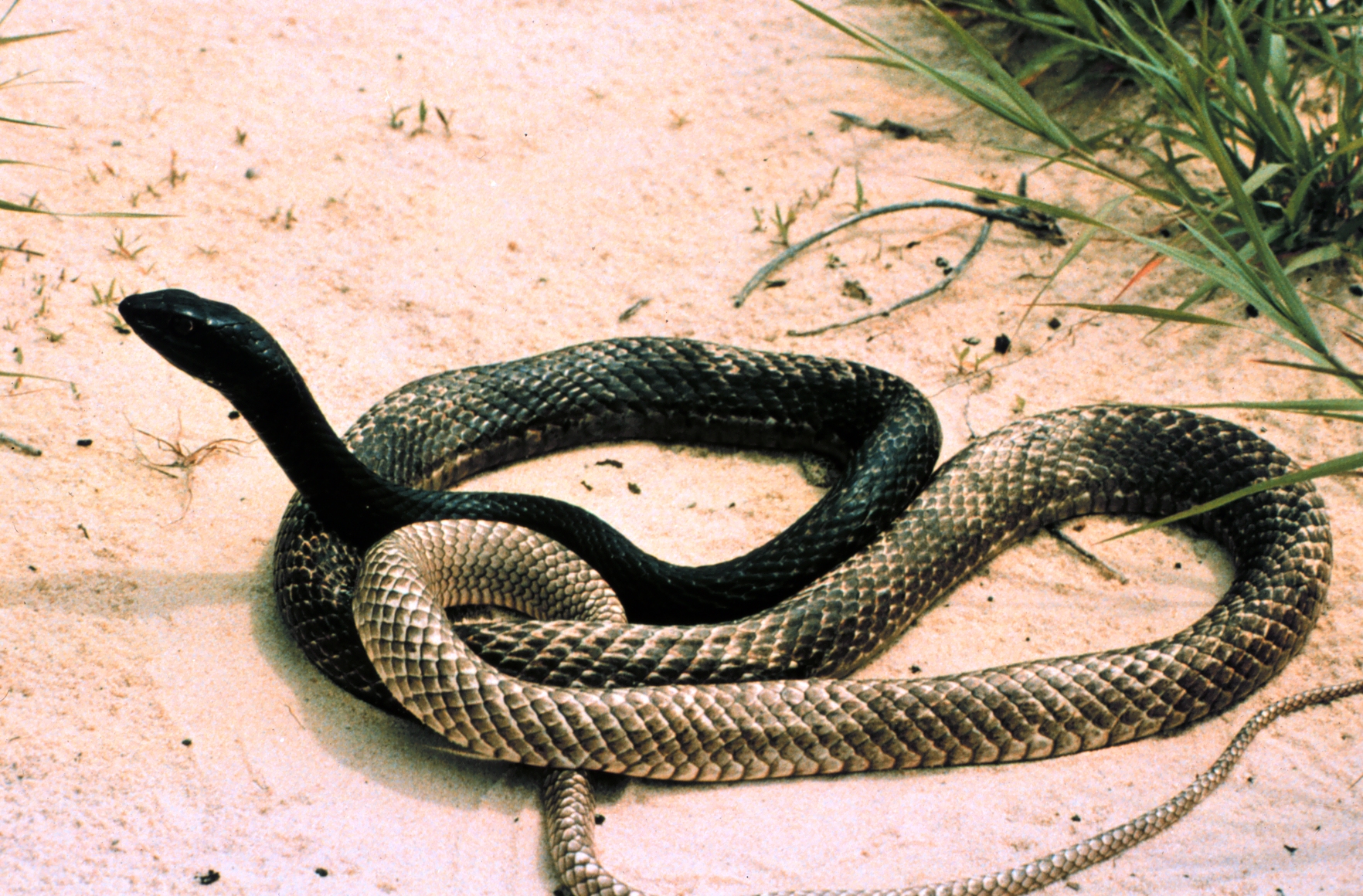
Scientific name: Masticophis flagellum.
Common name: coachwhip, whip snake.
Venomous: No.
Coachwhips are long and slender snakes that grow up to 8 feet (244cm) in length with distinct colors that fade moving from the head to the tail.
They are black on the head, tan over the body, and turning white near the tip of the tail. Their tails have a braided whip pattern. Younger snakes are slender and completely tan with irregular bands and white markings.
Coachwhips prefer open habitats with plenty of sandy soil. They are often encountered in pine forests, coastal dunes, prairies, and old fields.
6. Common Garter Snake

Scientific name: Thamnophis sirtalis.
Common name: Common garter snake.
Length: 4 feet (120 cm)
Venomous: No.
Common garter snakes are slender and long snakes, growing to 4 feet (1.2 meters).
They have stripes in a number of different colors from blue and gold to red, orange, yellow, black, and brown.
While not considered dangerous, a bite from the common garter snake can result in burning, swelling, and/or itching.
If handled, they give off a terrible smelling fluid.
They prefer fields, wetlands, marshes, meadows, and prairies, where they are often observed near water.
7. Speckled Kingsnake

Scientific name: Lampropeltis holbrooki.
Common name: speckled kingsnake.
Length: 48 in (120 cm) (maximum recorded length is 72 inches).
Venomous: No.
Speckled kingsnakes can grow up to 72 inches (180cm) in length.
They have a black and yellow to white pattern in the middle of every one of their dorsal scales.
They prefer damp areas, such as rivers and swamps, though they are known to live or move around in grassy fields and woodlands.
They are docile snakes but will strike if captured. They will shake their tails like rattlesnakes to deter predators while giving off a terrible smell if threatened.
These are commonly kept as pets.
8. Glossy Snake

Scientific name: Arizona elegans.
Common name: glossy snake, faded snake.
Length: 30 – 50 in (75 – 130 cm) (maximum recorded length is 56 in).
Venomous: No.
Glossy snakes have narrow heads that are pointed and have faded or pale colors and patterns.
They can grow to 50 inches (130cm) in length and range from gray to brown or tan with patterns on smooth skin.
Coloration can vary depending on the soil in the snake’s habitat.
They are usually observed in semi-arid grasslands.
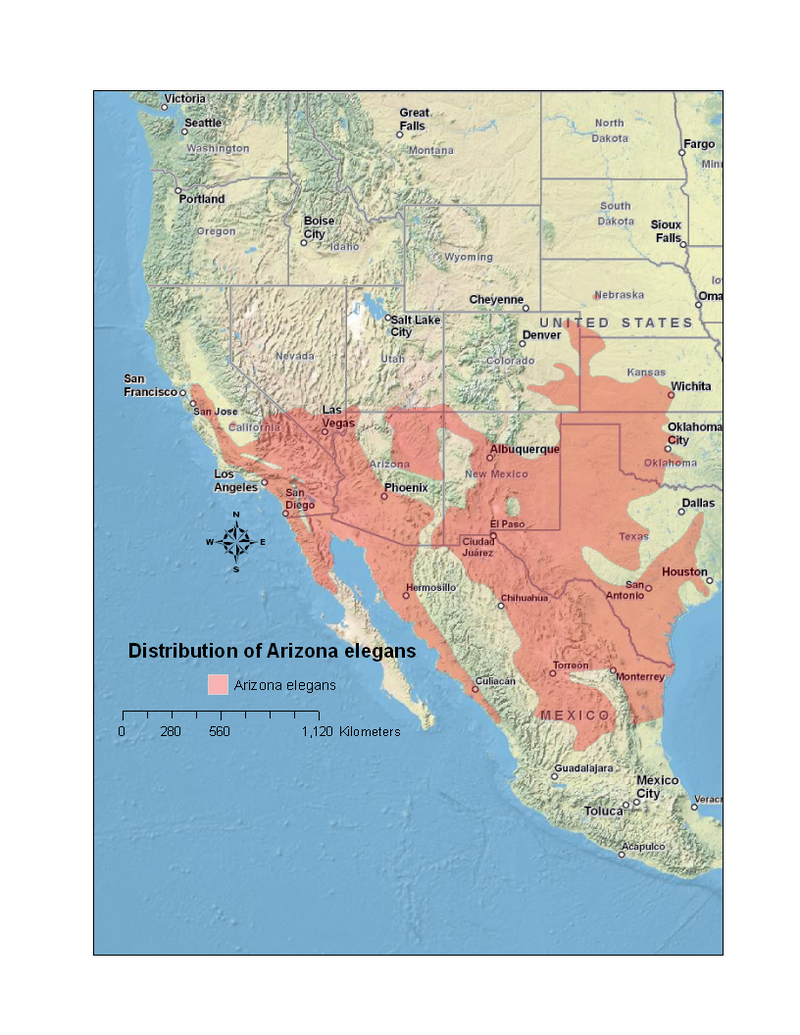
9. Great Basin Gopher Snake

Scientific name: Pituophis catenifer deserticola.
Common name: Great Basin gopher snake, bull snake.
Length: around 5.75 feet (175 cm)
Venomous: No.
The Great Basin gopher snake can grow up to 5.75 feet (175cm) in length.
They have dark brown to black dorsal spots that are connected by narrow lines. There is a longitudinal stripe on the side of the neck with lighter coloring. Their belly is cream with dark and irregular patches.
They can be found in woodlands, agricultural land, woodlands, deserts, and grasslands. These snakes are excellent at burrowing, swimming, and climbing.
They are not dangerous, but they will flatten their head and inflate their body, making hissing noises, while shaking their tails.
10. Great Plains Rat Snake

Scientific name: Pantherophis emoryi.
Common name: Great Plains rat snake, brown rat snake, chicken snake, eastern spotted snake, Emory’s Coluber, Emory’s pilot snake, Emory’s racer, Emory’s snake, gray rat snake, mouse snake, prairie rat snake, spotted mouse snake, Texas rat snake, and western pilot snake.
Venomous: No.
This rat snake is usually tan with patches of brown, green/gray, or dark gray down the back. They have stripes on both sides of the head, which comes to a point right between the eyes.
They can grow up to 5 feet in length.
These snakes prefer lightly forested and open grassland habitats and are common in semi-arid regions, rocky and mountainous areas, along coastal plains.
If approached it will shake its tail, while they curl their body up tightly. It will bite, even though it is non-venomous and has small teeth.
11. Ground Snake

Scientific name: Sonora semiannulata.
Common name: western ground snake, (common) ground snake, variable ground snake, miter snake.
Length: up to 19 in (48 cm).
Venomous: No.
Ground snakes can grow up to 19 inches (48cm) in length and range in color from orange to red or brown with black bands and orange or brown stripes.
Their belly is gray or white, their head is small and they are smooth.
They prefer rocky areas with an abundance of loose soil. They are very secretive and nocturnal and sometimes seen at night on roadsides.
12. Lined Snake

Scientific name: Tropidoclonion lineatum.
Common name: lined snake.
Length: up to 14 in (35 cm).
Venomous: No.
Lined snakes are small snakes that can grow to 14 inches (35cm) in length (maximum recorded length is 21 inches).
They are usually brown, gray, or tan with three pale yellow stripes, one down the center and one on either side of the body. Their belly is white and has two rows of half-moon-shaped black markings.
They live in a variety of habitats including oak forests, prairie grasslands, suburban areas, and woodlands.
13. Longnose Snake
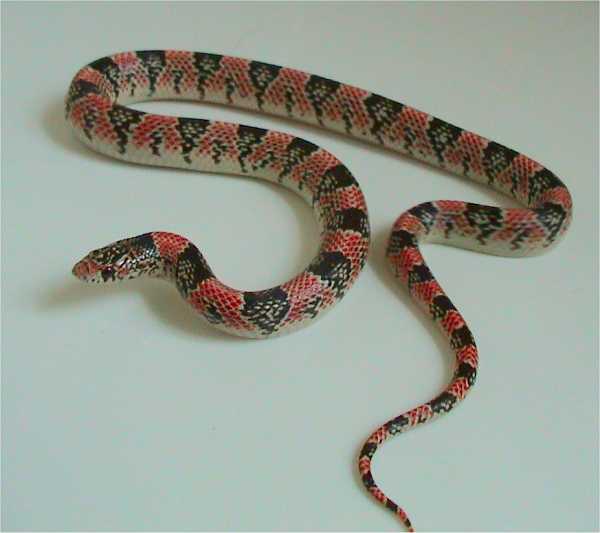
Scientific name: Rhinocheilus lecontei.
Common name: long-nosed snake.
Length: around 30 in (76 cm)
Venomous: No.
The longnose snake has a long and upturned snout. They resemble the coral snake with their tricolor, which is cream or yellow with red and black saddling, which resembles banding.
There are cream spots inside the black saddles, which help differentiate them from the coral snake.
They grow up to 30 inches (76cm) in length.
These are very seldom observed as they are burrowers and nocturnal, spending the majority of time underground.
They do not bite but give off an awful smelling odor if captured.
They prefer dry habitats, along with grassland and rocky areas.
14. Massasauga

Scientific name: Sistrurus catenatus.
Common name: massasauga.
Length: around 30 in (76 cm)
Venomous: Yes.
The venomous Massasauga grows to around 30 inches (76cm) in length.
They are gray or tan with a row of rounded black to brown colored patches or spots, that run down the center of their backs. There are also three small rows of spots down each side, which are alternating.
Some species are completely black, along with those where the patches on the back join the spots on the sides.
They are highly venomous with their venom causing tissue damage. They will try and avoid humans where possible, being rather shy snakes.
Medical treatments should be sought immediately if you think you have been bitten by this snake.
15. Midget Faded Rattlesnake
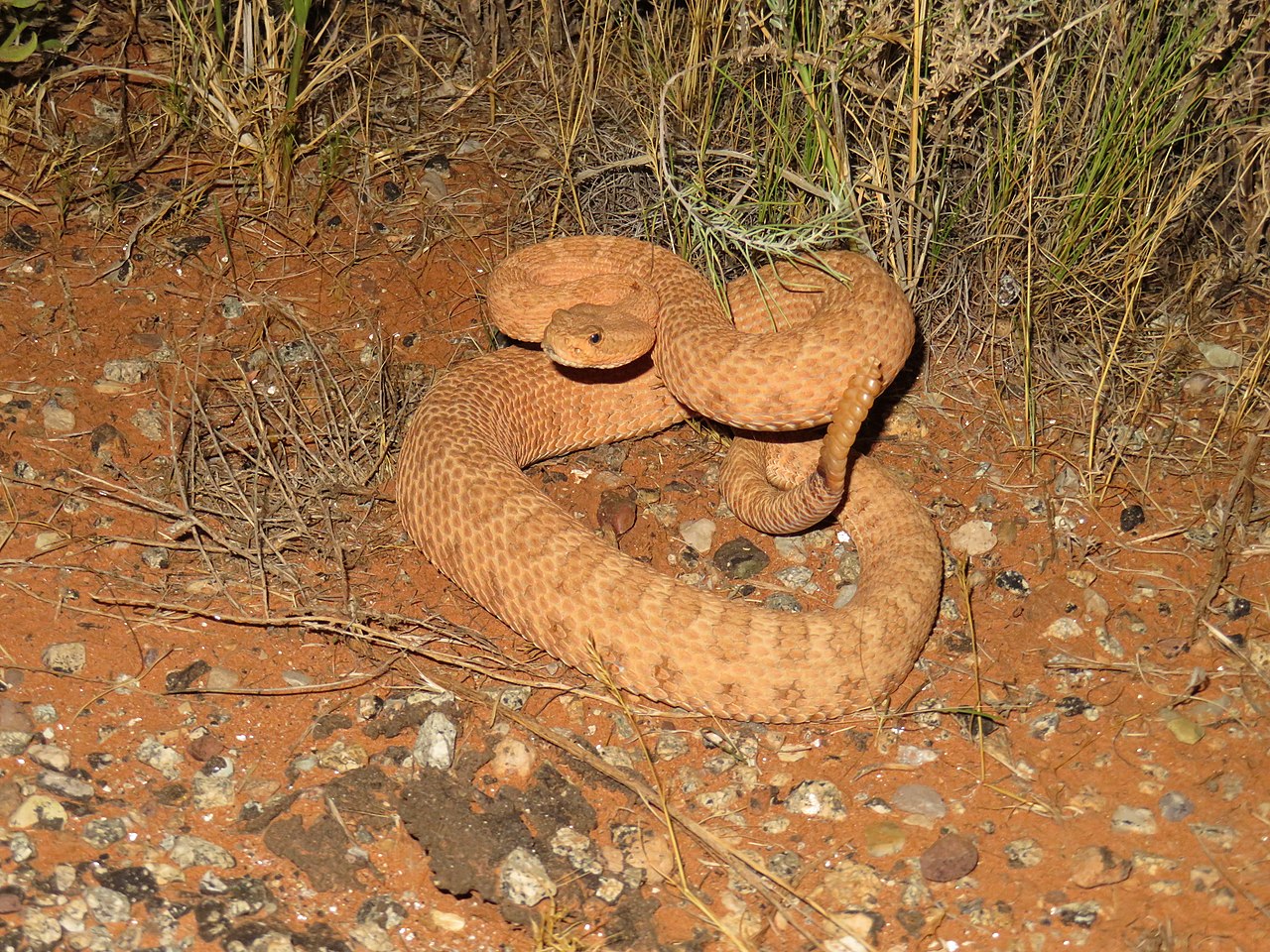
Scientific name: Crotalus oreganus concolor.
Common name: midget faded rattlesnake, faded rattlesnake, yellow rattlesnake.
Length: upto 30 in (76 cm)
Venomous: Yes.
The venomous midget faded rattlesnake is a small snake that grows to 30 inches (76cm).
They are range in color from yellow-brown and brown to pink or straw color. They have a number of brown dorsal patches.
They have a highly toxic venom, which is three times more potent than the Asiatic cobra. If you think you may have been bitten by a midget faded rattlesnake, get immediate medical treatment.
16. Texas Night Snake
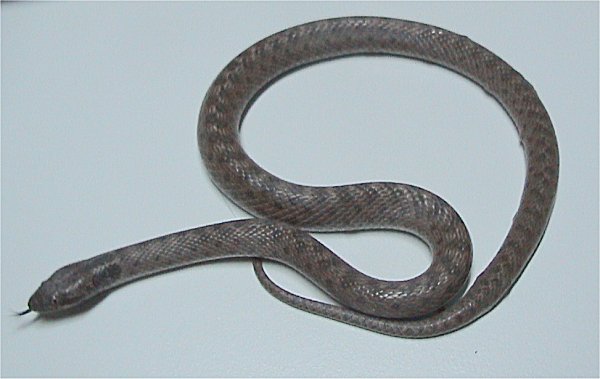
Scientific name: Hypsiglena jani.
Common name: Texas night snake, Chihuahuan night snake.
Length: around 16 in (41 cm)
Venomous: No.
This small snake can grow to 16 inches (41cm) in length.
They are usually tan to light gray with brown or dark gray patches down the back. Their belly is unmarked. Their scales are smooth.
They are not dangerous to humans.
These nocturnal snakes prefer semi-arid habitats with plenty of rocky soil.
17. Northern Water Snake

Scientific name: Nerodia sipedon.
Common name: banded water snake, black water adder, black water snake, brown water snake, common water snake, common northern water snake, eastern water snake, North American water snake, northern banded water snake, northern water snake, spotted water snake, streaked snake, water pilot.
Length: 24 – 55 in (61 – 140 cm)
Venomous: No.
The Northern water snake can grow to 55 inches (140cm) in length.
They are gray, tan, or brown in color with square patches on their backs and sides, which alternate and sometimes form bands.
They live in a range of aquatic habitats including streams, rivers, lakes, ponds, and marshes.
They are often observed basking in the sun on the edge of the pond or river, sometimes they hang from branches that sit over the water, enabling them to escape quickly from any predators.
18. Plains Blackhead Snake

Scientific name: Tantilla nigriceps.
Common name: Plains black-headed snake, plains blackhead snake.
Length: around 15 in (38 cm)
Venomous: No.
This small snake grows to around 15 inches (38cm) in length.
They tend to be brown/gray to tan in color with white ventral sales and a pink to orange colored mid-line.
They are often observed in grassy and rocky prairies or on hillsides where there is moist soil. In some cases, they make their way into basements. This secretive snake hides under leaf litter in small burrows.
19. Plains Garter Snake
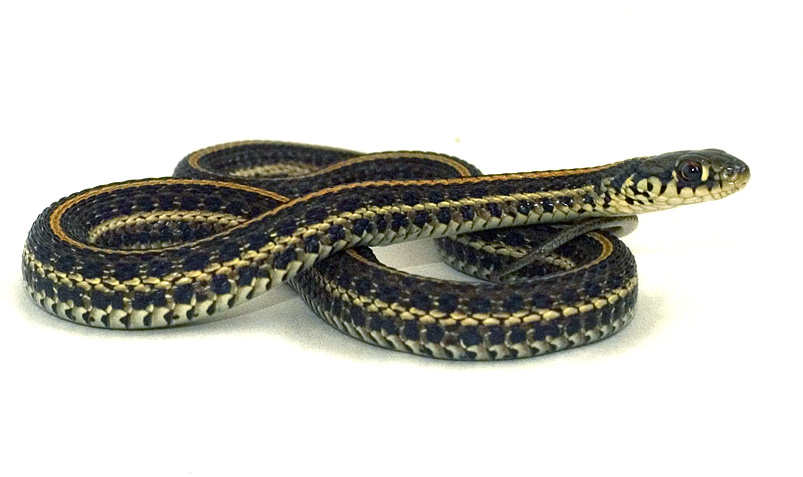
Scientific name: Thamnophis radix.
Common name: plains garter snake.
Length: around 3 feet (91 cm)
Venomous: No.
The plains garter snake grows to 3 feet (91cm) in length.
They have a yellow or orange stripe that runs from the head to the tip of the tail with black bars on their lips. They have a yellow to green lateral stripe and a gray to green belly with dark spots on the edges. These snakes usually have light yellow spots on their heads.
They are mostly active between April and October where they can be found in prairies and meadows close to water.
20. Prairie Rattlesnake
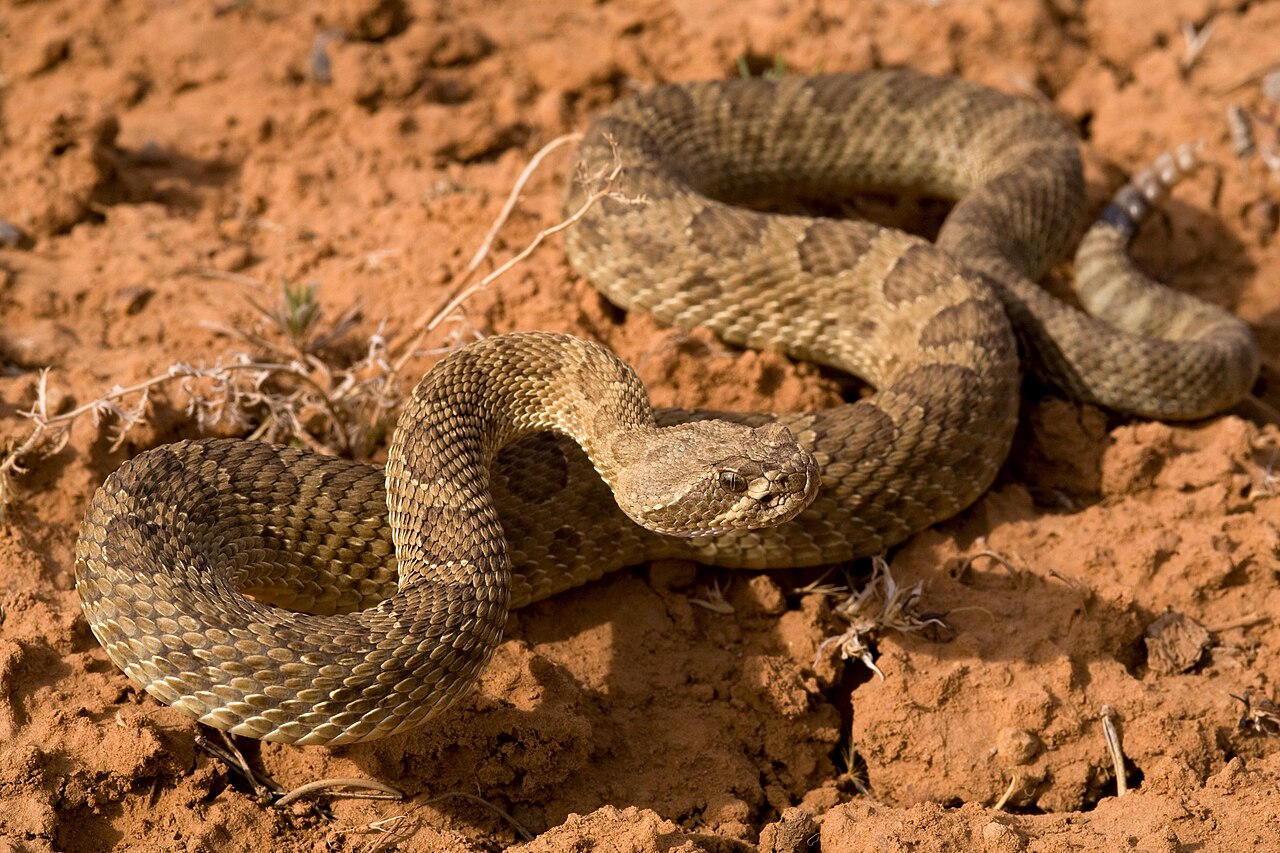
Scientific name: Crotalus viridis.
Common name: prairie rattlesnake, Great Plains rattlesnake.
Length: around 3.3 feet (100 cm)
Venomous: Yes.
The prairie rattlesnake can grow to 3.3 feet (100 cm).
They are light brown with dark brown patches that create a dorsal pattern. They have a triangle shape on their head.
They live in rocky areas and prefer dry areas. They are ground dwellers, though they have been known to climb trees or bushes.
If approached, they will rattle their tails, warning anyone that gets too close. They are venomous, causing destruction to tissues with neurotoxic properties.

21. Ringneck Snake

Scientific name: Diadophis punctatus.
Common name: ringneck snake.
Length: 10 – 18 in (25 – 46 cm)
Venomous: No.
Ringnecked snakes are olive, blue/gray, brown, or smoky black in color with a yellow, red, or orange neck band, some may have reduced bands, others may be broken.
The head color is darker than the body, which can be up to 18 inches (46cm) in length.
They can be found in rocky hillsides, woodlands, and damp environments. They are often encountered when lifting some wood from woodpiles.
22. Smooth Green Snake

Scientific name: Opheodrys vernalis.
Common name: smooth green snake, grass snake.
Length: 14 – 20 in (36 – 51cm)
Venomous: No.
Smooth green snakes are slender snakes that can reach 20 inches (51 cm) in length.
They are light green on their backs and white or yellow on their belly with smooth scales. Younger snakes start off an olive green until their first shed when they become bright green.
They occupy a host of habitats, including meadows, open woods, marshes, and the edge of streams. They are usually not far from a permanent water source, using their green color to help them blend into their environment.
They are docile and will not bite, but they will give off a foul smell if you get too close.
23. Southwestern Blackhead Snake

Scientific name: Tantilla hobartsmithi.
Common name: southwestern blackhead snake, Smith’s blackhead snake, Smith’s black-headed snake.
Length: less than 15 in (38 cm)
Venomous: No.
These are small snakes that grow no bigger than 15 inches (38cm) in length.
They are uniform brown with a black head and a cream or white collar. Their belly has a red stripe.
They are harmless to humans and are mostly nocturnal, coming out at night. They spend their day hiding in leaf litter, under debris, and in loose soil.
24. Striped Whipsnake

Scientific name: Masticophis taeniatus.
Common name: striped whipsnake.
Length: up to 72 in (183 cm)
Venomous: No.
This black, gray, or dark brown snake can grow to 72 inches (183cm) in length.
They have a dark longitudinal stripe and a cream to white stripe down the side, which has a solid or dashed line. Their belly is yellow to cream, fading as it gets closer to the head and more pink closer to the tail.
These snakes are common in shrublands, canyons, woodlands, oak forests, and grasslands.
They are fast-moving and will look for shelter in burrows, in trees, and in rocky outcrops.
25. Western Hognose

Scientific name: Heterodon nasicus.
Common name: western hognose snake.
Length: around 20 in (50 cm)
Venomous: No.
The western hognose is a small snake with a varying pattern from one snake to the next. Many look more like a rattlesnake.
They grow to around 20 inches (50cm) in length and have an upturned nose, which is what helps this snake when burrowing.
A bite from this snake is not considered medically significant, though their saliva can be mildly toxic to those with allergies.
These snakes prefer sandy or gravel areas, including floodplains, grasslands, semi-deserts, agricultural areas, and prairies.
Most of the Western hognose snakes are docile, though some are defensive. They will try and look like a cobra if they feel threatened, flattening their neck while they hiss and strike, their strike is not harmful to humans. If captured, this snake is more likely to play dead.
26. Western Terrestrial Garter Snake

Scientific name: Thamnophis elegans.
Common name: Western terrestrial garter snake.
Length: up to 41 in (104 cm)
Venomous: No.
The Western terrestrial garter snake can grow to 41 inches (104cm) in length.
They have a dorsal stripe and two stripes, one on either side which can be light orange, white or yellow in color. Some have red or black spots in between the dorsal and side stripes.
Their saliva is mildly toxic and may cause pain and swelling, which is localized to the bite area.
They can be found in grasslands, forests, and woodlands.
27. Eastern Yellow Bellied Racer

Scientific name: Coluber constrictor flaviventris.
Common name: eastern yellow-bellied racer.
Length: up to 60 in (150 cm)
Venomous: No.
Eastern yellow-bellied racers are slender snakes that can grow to 1.5 meters (60 in) in length.
They tend to be olive to green-gray with yellow bellies. Juveniles are cream with brown or gray patches, which change with each molt as the snake gets older.
These are fast-moving snakes and will bite if you handle them. They will flee if approached, due to their nervous nature.
28. Western Yellow Bellied Racer

Scientific name: Coluber constrictor mormon.
Common name: western yellow-bellied racer, western yellowbelly racer, western racer.
Length: up to75 in (190 cm)
Venomous: No.
The western yellow-bellied racer is non-venomous and is slender and long, growing up to 75 inches (190cm) in length.
They are green, brown, or blue with a yellow belly. Juveniles are gray with red to brown patches.
They have broad heads, large eyes, and slender necks with smooth scales.
They are active during the day and are fast movers, which will bite if they are captured.
They prefer open areas with plenty of sunlight, such as grasslands, meadows, woodlands, and forest openings.
The western yellow-bellied racer prefers moist habitats and will not be found in mountainous or desert areas.
Further Reading: